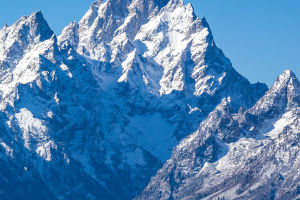Hiking In Snow
Winter hiking is a great way to reclaim the season and remain active all year long! Whether you’re planning on hiking in the snow or just braving the deep freeze, all you need is the right gear and proper planning to have a great time!
There are a lot of great reasons to give winter hiking a try: no crowds, no bugs, no wildfire smoke, and the quiet calming serenity of the winter landscape. Especially if there’s been a dusting of snow, even trails you’ve hiked a million times before can be transformed into a magical winter wonderland.
Winter hiking is also a surprisingly empowering activity. People's first reaction to the arrival of winter weather is usually to hide under a blanket, but the act of preparing for and going on a winter hike is a great way to positively assert ourselves and embrace the season. It’s now one of the highlights of the year!
While there’s a lot to love about hiking in the snow, there are some unique challenges that require more gear and forethought than summer hiking. Everything from trip planning to extra layers and footwear to identifying winter hazards. There’s a lot to consider before heading out on your first winter hike.
The maximum distance you can hike in the summer is more then what you can hike in the winter. For example, if you can hike a maximum of 15 miles in the summer, you will probably be able to hike 50-75% of that distance in the winter. There are a number of reasons why:
(1) With extra weight of clothing and packs, this will slow you down. Just a small amount of weight will slow you down and wear you out faster;
(2) Snowshoes or even microspikes add weight to your feet. Mountaineering boots are much heavier than trail runners you might be using in the summer. Extra weight on your feet will slow you down and wear you out faster;
(3) Hiking in the snow requires more energy. A nice hard packed snow trail is easier than deep snow. If you have to break trail requires an enormous amount of energy. You are lucky if you make it five miles in deep heavy snow.
As a general rule, most experienced hikers reduce their daily mileage to 50% of what they hike in the summer. But, you must adjust that number depending upon conditions.
Winter Hiking Gear Checklist
Worn Layers
Beanie or headband
Neck gaiter
Polarized sunglasses
Gloves or mittens
Synthetic underwear/sports bra
Base layer top: wool or synthetic
Base layer bottoms: wool or synthetic
Insulating mid-layer: down or synthetic jacket or fleece
Waterproof outer shell or rain jacket
Waterproof or water-resistant shell pants
Wool socks
Waterproof boots
Crampons or microspikes, if trail conditions require them
Shoe gaiters (optional)
Carried Gear
Daypack
Insulated water bottle
SPF Chapstick
SPF Sunscreen
Lotion
Toe or hand warmers (optional)
10 Essentials: In addition to your winter hiking clothes, you will want to pack your hiking
10 essentials, which include:
Navigation: map, compass, altimeter, GPS device, personal locator beacon (PLB) or satellite messenger
Headlamp: plus extra batteries
Sun protection: sunglasses, sun-protective clothes and sunscreen
First aid kit: including foot care
Knife: plus a gear repair kit
Fire: matches, lighter, tinder and/or stove
Shelter: carried at all times (can be a light emergency bivy)
Extra food: Beyond the minimum expectation
Extra water: Beyond the minimum expectation
Extra clothes: Beyond the minimum expectation

